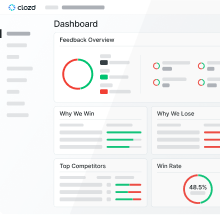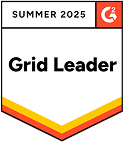
A few weeks ago, I was at my daughter's third-grade track and field meet. As I was waiting for my daughter's heat to begin, I watched some of the other races.
One particular race stood out to me. Six runners lined up, the gun fired, and they took off. Two of these runners built an early lead, but then something curious happened. Rather than focusing on the finish line, both runners began to look around to see where the other runners might be. Looking over their shoulders caused both of them to swerve back and forth, ever so slightly. That lack of focus allowed the third-place runner to overcome both of them to win the race.
These two kids lost because they became distracted by their competitors, they focused a bit too much on them, and they took their eyes off the real prize—the finish line.
The same thing happens in business all the time. It's important to know who your competitors are; it's critical to know their strengths and weaknesses, but never at the expense of understanding your actual customer, their needs, why they would purchase your solution, and how you can best deliver value.
With that paradigm in mind, here are eight tips for setting up a buyer-centric competitive intelligence program.
1. Know your buyer - it is critical that you have a clear understanding of the problem you solve for them, that you understand their profile, and that you can clearly articulate the value you bring. Far too many competitive intelligence programs do not start with this foundational requirement.
2. Know the (game) market - The analogy above is based on a 100M race. But some markets aren't like a race. Some are more like wrestling or a basketball game—more of a head-to-head match-up that is more intense competitively. To understand your competition, you need to have a sound understanding of market segmentation, how buyers' needs differ across those segments, then map your competitors.
3. Know your competitors - this seems straightforward, but it is not always. There are direct competitors, and there are indirect competitors. You should quantify who your primary competitors are and how often your buyers are delaying purchasing decisions. One of the most interesting things that we have seen in our work is how often a company's biggest competitor is to do nothing. That is a far different challenge to address than a head-to-head competitor relationship. This is one more reason why you want to start with a buyer-first approach. If you understand your buyer and their decisions, you will be able to understand who your biggest competitors are and prioritize accordingly.
4. Build your playbook - there are many sources for how you can collect competitive intelligence. The best source is the buyer. They are typically the most objective, evaluate solutions in the market, and have the most direct information. Another solution is your internal team. Any of the people that are involved in the direct selling of your solution can provide intelligence. But recognize this information comes through a biased source. You can also leverage publicly available information websites, product review sites, free trials, etc. but beware that these sources are often aspirational in nature and may not be as accurate for the current state. Their messaging and positioning can tell you more about the direction and focus for where they are going and where they are actually at right now.
5. Don't get lost in the weeds - Keep your focus on how you and the competitor(s) meet customer needs. We see many companies develop feature-by-feature comparison lists. This can be valuable for product development efforts, but when it comes to actually winning the business, it's essential to focus on the use case and how you can meet the needs or solve the problem. You may not have a feature that a competitor has, but your product may still have the ability to solve that issue and may be able to even do so in a more elegant way. So focusing on adding value, not specific features, allows you to keep your sales team's eyes on the finish line.
6. Balance your offense and defense - once you start to understand your competitive positioning, there is a dangerous tendency to focus on defensive positioning. That means you spend your time talking about your competitors and how you are different from them. You need to empower yourselves to do this tactfully and respectfully. Your primary goal is to focus on your company's value proposition and how it meets the customer's needs and does better than any alternative.
7. Share the information across your team - One of the biggest challenges that competitive intelligence efforts run into is the information staying siloed or not turning into action. Share it with stakeholders, so you don't go through this great effort to collect and curate all of this information, but nobody does anything to help you better compete. Better yet, get stakeholders involved before you even start sharing data. If you are unsure which stakeholders to involve, we recommend that competitive intelligence information gathered is shared with the sales team, pricing team, product team, marketing, and sometimes even the legal team. That isn't a comprehensive list, of course. This sharing needs to be done in a scalable way. It should also be clear enough that stakeholders with deeper knowledge about their discipline (e.g., sales, marketing, product) can pull insights themselves from the data.
8. Put the right players on the team - The person(s) on a competitive intelligence team need to be great team players. They need to have the trust of the sales team. They need to be able to work seamlessly across functions. They need to be smart and capable to have credibility with a broad swath of people. They need to have integrity so that they don't step out of bounds in their efforts. Most importantly, they need to be able to understand your customer and be customer-facing.
And in the end, to reiterate, make sure you keep the finish line, the buyer, in mind. The goal of competitive intelligence programs should be to help you win more, and you win by delivering for the customers better than any alternative.











.svg)











.svg)

.svg)




